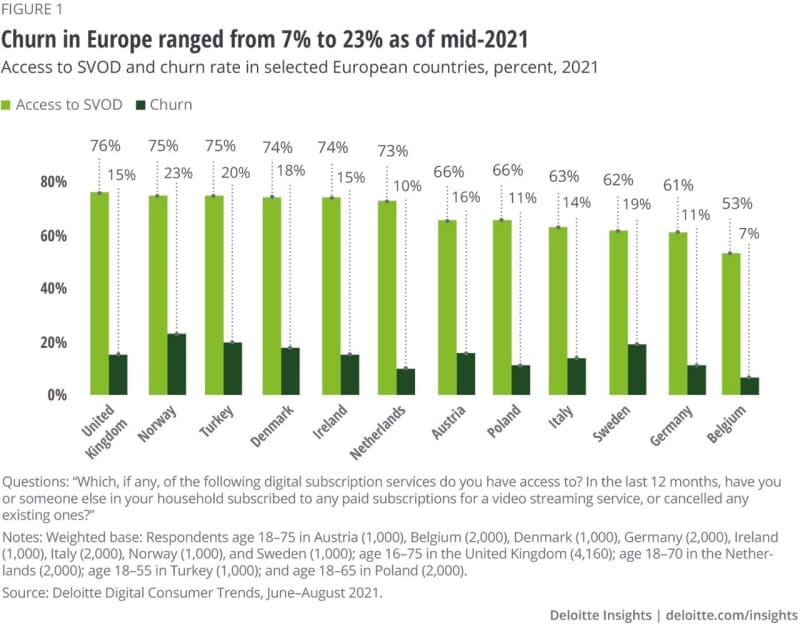Whatever the business model, providers worldwide should keep churn under control as competition intensifies. The cost of content development and acquisition is unlikely to decline, and the pressures to acquire and retain audiences will persist. To succeed, SVOD providers should work to better understand their customers and their lifetime value, develop more options for different audience segments, and offer value across an array of entertainment options.
Offer more pricing tiers. Providers could add more pricing tiers for different subscriber segments, customized to each market. They could attract viewers through multiple ad-supported and ad-subsidized tiers, then target premium subscribers with VIP tiers and access to exclusive content such as first-run movie premieres and premium sporting events. Providers could also offer reward programs to free ad-supported subscribers as a pathway to access premium content and exclusives.
Leverage partnerships. Partnering with telecom operators or cable TV can provide access to a large proportion of the population, especially in mobile-first markets. This can help SVOD providers trim distribution and customer management costs, or simply create more incentives for people to stay with a bundled option. Partnering with studios and distributors can similarly help providers manage costs and reach broader audiences, as well as develop regional content. However, SVOD providers should ensure that customer satisfaction—and access to customer data—is not diluted by such partnerships.
Understand customer value. Better data about smaller customer segments can be essential to developing more effective content personalization, acquisition, and retention tactics. It can make it easier to predict when a customer might leave due to growing cost sensitivities or indifference to content—and even lower the risk of developing new content through a better understanding of what will succeed for different segments. By using data to understand the lifetime value of a customer, providers can develop more enduring relationships, especially with more-profitable age groups: A 20-year-old customer who remains loyal can yield decades of recurring revenues.
Learn from other providers. SVOD providers can anticipate and mitigate churn by learning from maturing on-demand services around the world. They can also look to learn from telcoms, which have spent decades managing churn, as well as companies in gaming and social media—SVOD’s two largest competitors.
SVOD’s success was built on offering a flexible alternative to the costs and constraints of pay TV, and consumers are not likely to relinquish the freedom they have become accustomed to in assembling their own select baskets of entertainment. SVOD providers’ ultimate success will likely lie in building a nuanced and granular relationship with consumers to deliver ongoing value—not finding ways to make it harder for them to leave.

















